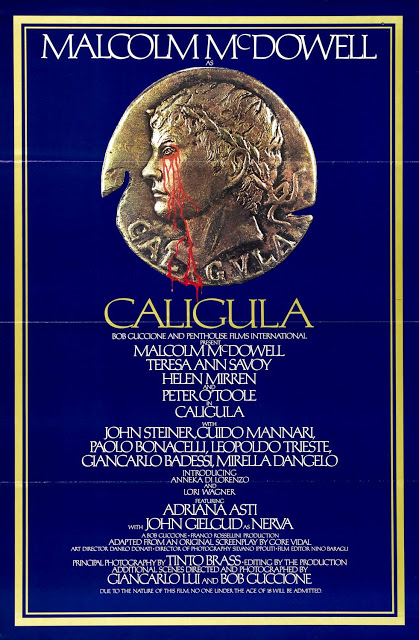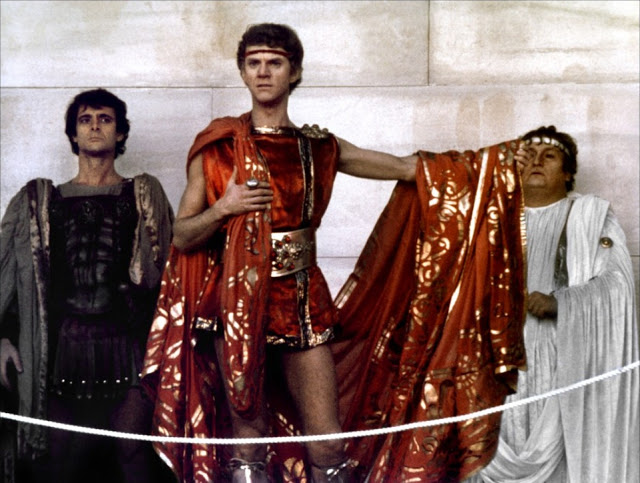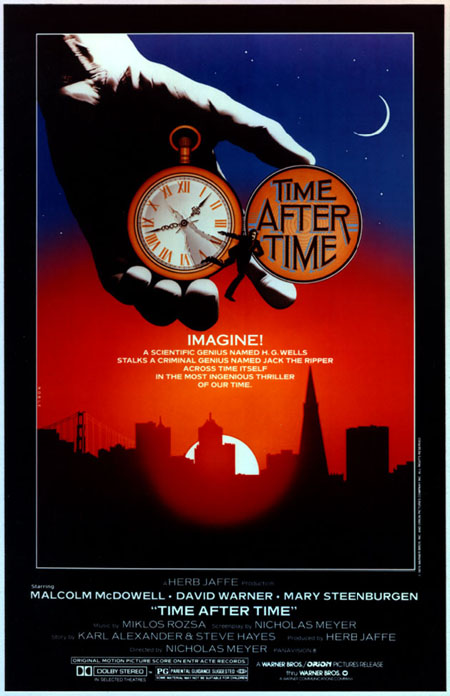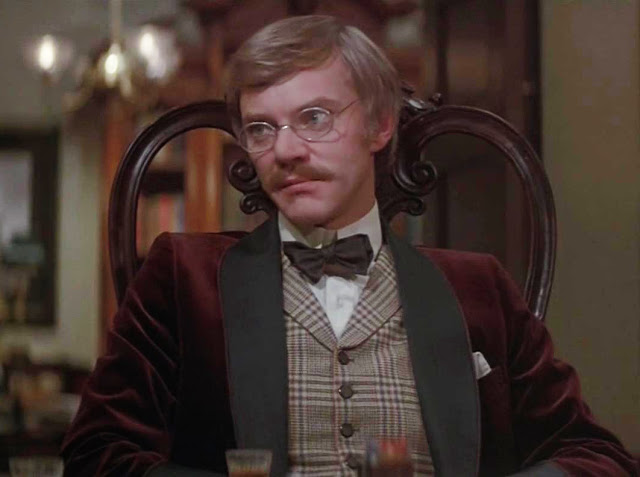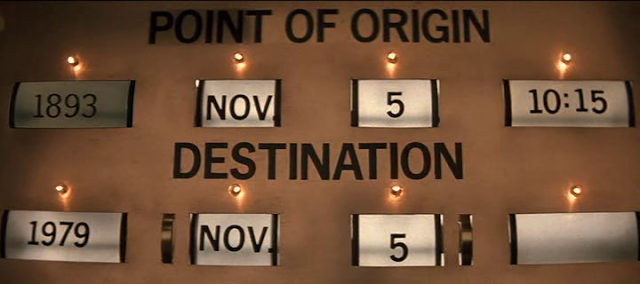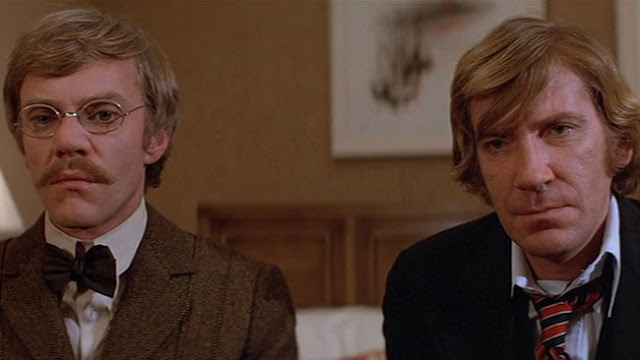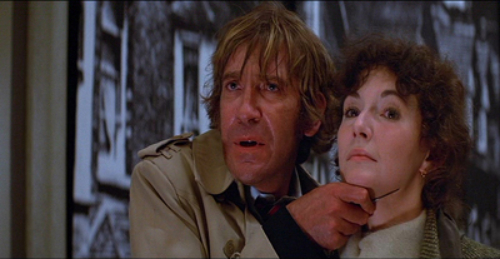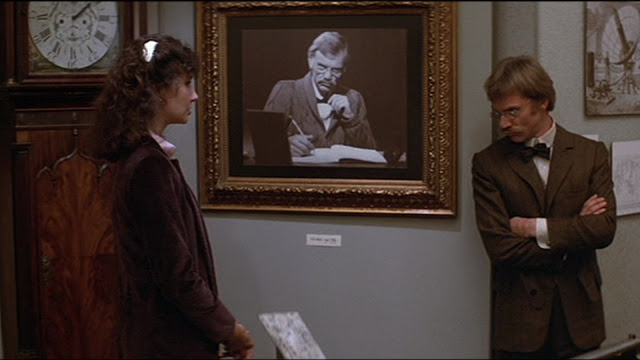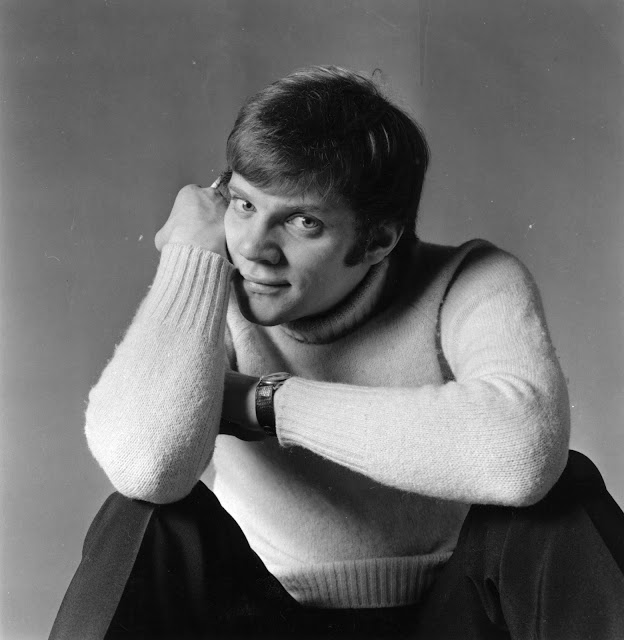 |
| Written by Generoso Fierro |
In between his brilliant feature film debut in Lindsay Anderson’s prophetic 1968 counterculture film If and his current job making Lunchables commercials, the wheels came off the career of legendary English actor Malcolm McDowell.
During the late 1970s, with his career booming off of critical and commercial successes such as Lindsay Anderson’s O Lucky Man, which Malcolm starred in and co-wrote the screenplay, to portraying Captain Flashman in Richard Lester’s 1975 hit Royal Flash to his most famed role as Little Alex in Kubrick’s adaptation of Burgess’ A Clockwork Orange, it seemed that nothing could unseat him from being regarded as one of the great young talents in British cinema.
That is until 1979, when Malcolm appeared in three films, two of which saw small popularity and decent press and one film which saw international headlines but for all the wrong reasons: the Tinto Brass directed and Bob Guccione produced hardcore porn Roman epic, Caligula.
Caligula’s” rank violence and often grotesque sexuality offended just about everyone and was relegated to a single screen in a NYC theater that Guccione purchased just so that his X-Rated opus could screen anywhere without incident. Caligula starred John Gielgud, Peter O’ Toole, and a young Helen Mirren, all of whom came out of the experience with their careers fairly unscathed, but after all, none of them were playing the title character, and for that, McDowell saw his performance singled out and savaged for its flamboyancy, which frankly was no less flamboyant than the performance that he gave as a ruthless Nazi commander in The Passage, which was released the same year.
Then again, in our polite society, I guess it’s more acceptable to play a torturing fascist than a Roman leader with a penchant for anal fisting newlyweds.
In the summer of 1979, Caligula had been released in Rome and the word of this bleak, over budget porno had begun to hit the United States with word that the film would be released early the following year.
That same summer I was thrilled to head to my local single-screen theater to see McDowell, who I had followed since seeing A Clockwork Orange at the age of ten when my friend and I watched it on tape, playing author HG Wells in a new movie called Time After Time.
In this whimsical, mostly romantic and far less geeky film, McDowell plays Wells with a heartfelt charming conviction. The film opens in the year 1896 with a grizzly killing committed by none other than real life serial killer, Jack The Ripper. Soon, we are whisked to the home of Wells who is hosting a dinner party for his peers where he plans to give special unveiling of a new project later in the evening.
Once the last of his dinner guests, Doctor Stevenson (David Warner), arrives, Wells adjourns the group to his basement where he shows them his proud creation, a very ornate almost amusement park ride looking contraption Wells calls “a time machine” (we are to guess that he has not written that book yet). Wells boldly explains the functionality of his creation, but when he is asked if it actually works he sheepishly admits that he has not “worked up the nerve to test it out yet.” His guests laugh off the invention, but the laughter soon ends when Scotland Yard knocks on the door. As we the viewer know but Wells’ guests don’t, The Ripper has struck again, and the proof that Doctor Stevenson is most likely the man that they are looking for sends the austere house into a frenzy, but after a thorough search, the bad doctor is nowhere to be found.
It then dawns on Wells that someone had the nerve to use his invention, and that man is Stevenson whom Wells, well known for his utopian ideals, must now stop as he (Wells) is certain that Stevenson will run amok with violence in the future, a place where HG imagines being devoid of war and strife. So, our protagonist must follow Stevenson into the future, 1979 San Francisco to be exact.
After a dazzling time-travel sequence, Wells arrives in swinging 1979 San Francisco. Cleverly the future has allowed him to land his ship in a museum exhibit featuring Wells’ entire study and his time machine which the sign indicates “never worked,” which is odd as the key that only Wells possesses is only needed to prevent the machine from automatically returning to where it came from, meaning that anyone could just type in a date and make it fly.
OK, I feel me getting geeky here, so I will move along, but did you notice how I didn’t mention that Wells could’ve simply ended the story at the beginning by taking his time machine back an hour in 1896 to alert the police that Stevenson was The Ripper? Yes, the story does have some gaping holes when playing with its time travel plot, but, as I don’t want to trip out on the sci-fi aspects just yet, I will now really move along.
Wells immediately understands that the utopia he had predicted in the future has not yet arrived. There is violence, mistrust, and poverty, but McDowell shrugs it off and like Sherlock Holmes, who he mentions many times in the film, uses deductive reasoning and goes bank to bank asking about Stevenson as Wells suspects that he will try and exchange Sovereigns somewhere in the city before building up a body count. Wells’ quest leads him to a desk at the Bank of England where he meets a young manager named Amy (a wonderfully ditsy Mary Steenburgen). Amy does point HG in the right direction as she referred Stevenson to the Hyatt, where the nebbish Wells will soon confront the larger serial killing Stevenson and try, through conversation, to get him to return to 19th Century England to face the authorities (not sure how the screenwriter thought that made any sense).
Stevenson tells Wells that their present location and time in the United States is a violent place where Stevenson finally feels at home, and after a scuffle where Stevenson unsuccessfully tries to locate the time machine key on Wells, they take their chase on foot to the streets, where Stevenson is hit by a car and is presumed dead.
Wells, believing that his job is now over, seeks out our good bank clerk Amy for a chance at gaining knowledge of this place in time and perhaps the odd chance at a cuddle. Not phased that HG is dressed like a Sherlock Holmes-era dandy, Amy beds and falls in love with Wells, who is in no rush to go back to the days when seeing a woman’s exposed ankle was considered erotic.
Through news reports on the radio, Wells soon realizes that The Ripper is still alive and well and slicing up the women in the Bay area, so he must hunt him down and inadvertently gets Amy mixed up in the quest, so she then becomes hunted by Stevenson as Wells will not surrender his key.
Of course Stevenson could just get back into the time machine and go farther into the future or deeper into the past to kill prostitutes but without the key, that would mean that Holmes would still be after him. I, for one, began to wonder, even at the age of eleven, why that would even be of concern to Stevenson unless he is foolish enough to head back to 1896 England. Anywhere else, Wells would be seen as a crackpot having to explain his investigation of Stevenson through the time space continuum.
In this way, Time After Time does not succeed as science fiction; in fact the science fiction engine of this film is only there to set up the romance between HG and Amy, which is fine for me.
There is a palpable chemistry between McDowell and Steenburgen onscreen, as they did actually fall in love during filming of Time After Time and were married the next year, and they stayed married for the next decade. To add to the lovely performances of McDowell and Steenburgen, David Warner is also fantastic as Jack The Ripper, and if the plot had less about the relationship between HG and Amy, it would’ve been an entirely different film, one that would’ve relied more on the facts that we know about Jack The Ripper and HG Wells to further a plot of cat and mouse as opposed to the fictional character of Amy, a perspective that has me curious of the outcome, but, nevertheless, I greatly enjoyed the romantic perspective that director Meyer takes with the story.
Adding further to the enchanting mood of Time After Time is a lavish old Hollywood score composed by the great Miklós Rózsa, who had scored almost one hundred films in his career from Ben Hur to Spellbound to Double Indemnity. The score for Time After Time would mark the end of Rózsa’s magnificent Hollywood career.
The following year in 1980, Steenburgen would deservedly win the Academy Award for her portrayal of Lynda the wife of Melvin Dummar in Jonathan Demme’s classic Melvin and Howard. That same year Caligula would open in the U.S., and its presence on our shores would cause immense controversy and forever link McDowell negatively to the titular role.
Buried with the controversy that year and now virtually forgotten was another fine performance by McDowell in Look Back In Anger, directed by his friend Lindsay Anderson. Two years later, Anderson would direct McDowell in the last of his Mick Davis trilogy in the dark comedy that is Britannia Hospital. That film, a smart satire on the British Health Service, also failed at the box office. In the following years, McDowell was mostly relegated to villainous roles, a few notable performances being Mr. A from Robert Altman’s ballet drama The Company in 2003 and that same year as the heavy in Mike Hodges’ underrated anti-gangster film, I’ll Sleep When I’m Dead.
Despite its flaws in storytelling, I always looked at Time After Time as that last beautiful moment for McDowell in cinema. Pigeonholing an actor, either positively or negatively, is never a good thing if you have the talent that McDowell exhibited during his career. Time After Time proved that Malcolm could be comedic but also romantic and charming while eating up the screen as he did as a psychotic in many films.
Sadly, there isn’t a real time machine for McDowell to go back and reconsider his role of a demented orgy-obsessed Roman emperor, but let’s hope that before he leaves this world, he turns down a check to shill for a packaged lunchtime product to make a small film that mattered like his Caligula counterpart Peter O’Toole did in 2006’s sublime film Venus.


































































































